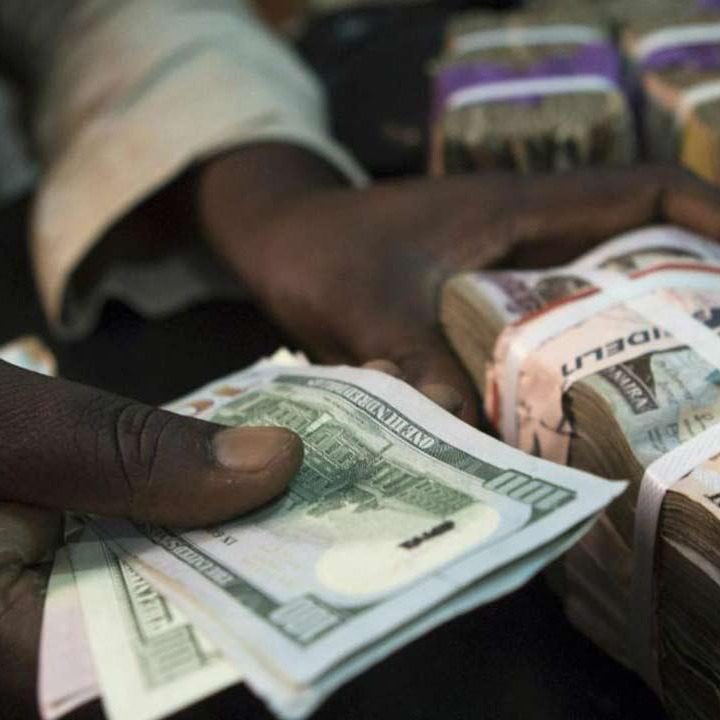DOLLAR STEADY AS TRADERS WEIGH FED RATE CUT BETS; YEN SHAKY AT 150/DLR
The dollar was steady on Friday after data showed U.S. inflation remained sticky but is easing gradually, keeping hopes alive that the Federal Reserve will start cutting interest rates in June, while the yen stumbled back to the key 150 per dollar level. Bitcoin’s blistering rally took a breather and was last at $61,400, near a more than two-year high and within range of the record high. The cryptocurrency surged 45% in February, its biggest monthly gain in more than three years, boosted by cash rushing into exchange-traded funds which were approved and launched this year in the United States. The dollar index , which measures the U.S. currency against six rivals, was at 104.12 after a volatile overnight session following the inflation report. The data showed U.S. prices picked up in January in line with expectations, while annual inflation slipped to the lowest in three years. “The data does emphasise the need for the FOMC to be cautious before beginning to normalise interest rates, especially in the current context of a still-tight labour market,” Commonwealth Bank of Australia strategists said. A string of strong U.S. economic data and recent reports showing persistent price pressures had led traders to rethink when the Fed will start its easing cycle, with the latest expectations that June is likely to be the starting point.
POUND HEADS FOR BEST MONTHLY GAIN OF 2024 AHEAD OF US INFLATION
The pound headed on Friday for its best monthly performance against the dollar this year, driven by expectations that the Bank of England may need to keep UK interest rates higher for longer as inflation persists. Data on Friday showed UK house prices rose in May after two months of declines, although a separate report later in the day on U.S. inflation could prove a bigger driver for currencies. Sterling was down 0.12% on the day at $1.2717, but was headed for a rise of 1.7% in May, which would be its largest monthly increase since November’s 3.9% gain. The pound hit a two-month high of $1.2801 on Monday and has drifted since then to a low around $1.268. But analysts say any further declines should remain relatively contained. “While these levels underpin (sterling), further range-trading is likely to be witnessed. A drop below these lows would engage the April-to-May tentative uptrend line at $1.2628,” IG senior financial analyst Axel Rudolph said. Traders expect one rate cut this year from the Bank of England, but the jury is out on whether there is scope for a second. Interest-rate futures show roughly 32.5 basis points’ worth of cuts are priced in by December, down from just over 50 bps a week ago. Investors tend to watch how sterling performs against the euro for a more accurate reflection of sentiment towards the UK economy and its markets.
STOCKS REBOUND WHILE DOLLAR, TREASURY YIELDS FALL AFTER US DATA
MSCI’s global equities index staged an afternoon rebound on Friday as investors repositioned for month-end, while the dollar fell with Treasury yields as data showed a modest rise in U.S. inflation in April. After spending most of the session in the red, the MSCI All Country World Price Index turned positive ahead of a Rebalance of the index. When Wall Street trading ended, the global index was up 0.57% at 785.54 after falling as low as 776.86 earlier. “When you get an upside reversal it’s always a good sign if you’re bullish,” said Joe Saluzzi, head of Equity Market Structure Research and co-head of equity trading at Themis Trading. He cited month-end portfolio adjustments for the late session buying. Before the market opened on Friday, the U.S. Commerce Department said the personal consumption expenditures (PCE) price index, widely seen as the Federal Reserve’s favoured inflation indicator, increased 0.3% last month, in line with expectations and the March increase, while core PCE rose 0.2%, compared with 0.3% in March. While some strategists said they were relieved inflation wasn’t hotter than expected, Robert Pavlik, senior portfolio manager at Dakota Wealth in Fairfield, Connecticut said the data didn’t change much in terms of interest-rate expectations.
SOUTH AFRICAN RAND FALLS AS ELECTION VOTE COUNT GETS UNDERWAY
The South African rand fell on Thursday as early poll results showed the governing African National Congress was on course to lose its majority, a scenario that could lead to weeks of uncertainty as it tries to negotiate a coalition with one or more smaller parties. At 0716 GMT, the rand traded at 18.6525 against the dollar ZAR=D3, over 1% weaker than its previous close. The dollar =USD last traded around 0.1% weaker against a basket of global currencies. Vote counting was underway on Thursday after South Africans took to the polls on Wednesday in the most contested election since the end of apartheid. The governing African National Congress is projected to get roughly 42% of the national vote, the country’s Council for Scientific and Industrial Research told the public broadcaster on Thursday. Around 11.37% of the votes had been tallied at 0716 GMT, and markets are likely to get a clearer picture of the outcome as counting continues. South Africa’s benchmark 2030 government bond ZAR2030= was weaker in early deals, with the yield up 17 basis points to 10.695%.
CURRENCIES TREAD CAUTIOUSLY AFTER U.S. INFLATION REPORT, FOCUS ON ECB
The currency market started the week cautiously, with the dollar slightly lower on Monday after data last week showed U.S inflation had stabilized in April, keeping the door open for the Federal Reserve to cut interest rates later in the year. The dollar posted its first monthly decline of the year in May, weighed down by shifting expectations on when the U.S. central bank will cut rates and by how much. Markets are pricing in 37 basis points of cuts this year from the Fed after data on Friday showed the personal consumption expenditures price index increased 0.3% last month, matching the unrevised gain in March. Traders are now pricing in about a 53% chance of a rate cut in September, versus about 49% before the report. The inflation data still shows price pressures remain above the Fed’s 2% target, with the year-over-year rise in the PCE index measuring 2.7% in April, the same rate as in March, keeping the markets unsure of more than one rate cut in 2024. “If the Fed can cut because they can rather than because they have to stave off a recession, the markets should do well,” said Brian Jacobsen, chief economist at Annex Wealth Management. “The market will get impatient with the Fed’s patience since the growth data suggests the Fed is waiting too long to recalibrate rates. They seem primed to seize defeat from the jaws of victory.”
- CAPITALDIGEST MARKET REVIEW 22/07/2024July 22, 2024
- CAPITALDIGEST DAILY NEWS 22/07/2024July 22, 2024
- CAPITALDIGEST MARKET REVIEW, 08/07/2024July 8, 2024
Enter your email address for receiving valuable newsletters.
- CAPITALDIGEST MARKET REVIEW 22/07/2024DOLLAR SET FOR WEEKLY RISE, CYBER OUTAGE UNSETTLES INVESTORS The dollar climbed in trading on...July 22, 2024
- CAPITALDIGEST DAILY NEWS 22/07/2024FUEL PRICE HITS N750/LITRE IN JUNE – NBS The National Bureau of Statistics has released...July 22, 2024
- CAPITALDIGEST MARKET REVIEW, 08/07/2024US DOLLAR INCHES LOWER AS DOVISH POWELL COMMENTS OFFSET UPBEAT JOBS DATA The dollar slipped...July 8, 2024













